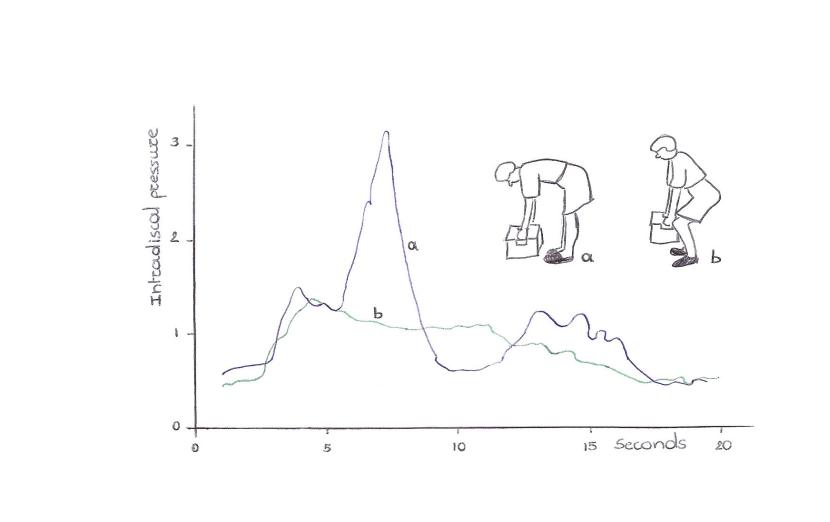Back School
Original Editors - Your name will be added here if you created the original content for this page.
Top Contributors - Sheik Abdul Khadir, Lien Hennebel, Lucinda hampton, Admin, WikiSysop, Kim Jackson, Rachael Lowe and 127.0.0.1
Search Strategy[edit | edit source]
Databases searched: Pubmed, Pedro
Keywords searched: Back School, Effectiveness, Review, Randomized Clinical/Controlled Trial, Occupational Setting, Swedish Back School, Back School now, Back Pain
Definition/Description intervention[edit | edit source]
A back school is an intervention protocol consisting of an educational program and skills acquisition program, including physical exercises. All the lessons are given to groups and are supervised by a medical specialist or a paramedical therapist (a physiotherapist). [1][2]
However this is a common definition, the intensity and content of back schools differ. For example, the existence of high- and low intensity back schools. [3]
The target population for back training: [4]
- Patients who have never had low back pain (primary intervention).
- Back school, as a means of secondary prevention, are indicated for patients who have to contend with acute, chronic low back pain or with recurrence a-specific low back pain (but also post-operative patients or patients with a disc prothesis).
Back school is aimed at people with low back pain that can be linked to the clinically relevant anatomy.
Clinically Relevant Anatomy[edit | edit source]
The intervertebral disc consists of three parts [4]: Lumbosacral Biomechanics
- Anulus fibrosus
- Nucleus pulposus (surrounded by the anulus fibrosus)
- Vertebral end plate
Characteristics/Clinical presentation[edit | edit source]
The biomechanical principles: Functional load / compression on the nucleus pulposus results in a deformation without changing the volume of the nucleus. When a persistent compression is applied to the anulus fibrosus, it will release water. The height of the disc decreases, so there is more compression on the nucleus pulposus. The disc needs compression to maintain the metabolic activity of the disc, osmotic system of the disc Lumbosacral Biomechanics. But when the compression is too high, the intradiscular pressure increases and can develop in low back pain. Some body postures and movements increase this intradiscal pressure. The purpose of back school is to teach how these movements and postures can be avoided and to avoid this increasing intradiscal pressure.
For example, the intradiscal pressure by lifting a box. On the graph you can see the intradiscal pressure by two types of lifting. It’s by the principal of the lever. As the load and load arm are smaller, the force required to keep the lever in balance is smaller too. [4]
Fig. 1: When you lift a box with a rounded back, the intradiscal pressure increases with a sharp peak. It's better you lift a box with a straight back.[4]
Physical Therapy Management (Content of the lessons)[edit | edit source]
Key Evidence[edit | edit source]
Resources[edit | edit source]
References [edit | edit source]
- ↑ Heymans, M., Van Tulder, M., Esmail, R., Bombardier, C., Koes, B., 'Back schools for nonspecific low back pain', Spine, 2005, Vol. 30, nr. 19, p. 2153-2163 (Level of evidence 1A)
- ↑ Brox, J.I., Storheim, K., Grotle, M., Tveito, T.H., Indahl, A., Eriksen, H.R., 'Systematic review of back schools, brief education and fear-avoidance training for chronic low back pain', The spine journal, 2008, Vol. 8, p. 948-958 (Level of evidence 1A)
- ↑ Heymans, M., De Vet, H., Bongers, P., Knol, D., Koes, B., Van Mechelen, W., 'The effectiveness of high-intensity versus low-intensity back schools in an occupational setting', Spine, 2006, Vol. 31, nr. 10, p. 1075-1082 (Level of evidence 1B)
- ↑ 4.0 4.1 4.2 4.3 Kraemer, J., Hasenbring, M., Kraemer, R., Taub, E., Theodoridis T., Wilke, H.J., 'Intervertebral disk diseases: causes, diagnosis, treatment and prophylaxis', Thieme, 2009, p. 321-327







